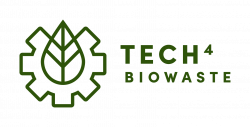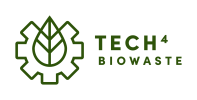Insect farming
| Technology | |

| |
| Technology details | |
| Name: | Insect farming |
| Category: | Conversion (Biochemical processes and technologies) |
| Feedstock: | Food waste, garden & park waste |
| Product: | Insect protein, fertilizer, insects for biological pest control or crop pollination, silk, dyes, pharmceutical, ingredients for cosmetic and other uses |
Insect farming involves breeding, rearing and harvesting insects for animal feed, human consumption, biological pest control, crop pollination, products like silk or dyes, pharmceutical, cosmetic and other uses. The diversity of insect species includes groups highly specialized in their ability to thrive on different organic substrates as food sources. Some of these substrates resemble food wastes form agriculture and food processing industries. This is also referred to as insect-based bioconversion and represents an economically and environmentally viable method for turning large quantities of food waste into valuable materials.
Feedstock
Origin and composition
Insects can be fed a mix of by- and co-products from the agri-food industries and with resources which are currently not being used and not or no longer destined for human consumption, such as the so-called 'former foodstuff'. The by- and co-products may also include those derived from grains, starch, fruit and vegetable supply chains (e.g., bran, distillers grain, unsold fruit and vegetables, including peels) as well as products arising from food manufacturing processes. Highly cellulosic diets are possible.[1]
Vassileios Varelas describes the requirements of insect feed as follows: "In general, the major macronutrients required for insect mass production are (a) carbohydrates, which serve as an energy pool but are also required for configuration of chitin (exoskeleton of arthropods), (b) lipids (mainly polyunsaturated fatty acids such as linoleic and linolenic), which are the main structural components of the cell membrane, and also store and supply metabolic energy during periods of sustained demands and help conserve water in the arthropod cuticle, and (c) the amino acids leucine, isoleucine, valine, threonine, lysine, arginine, methionine, histidine, phenylalanine, and tryptophan, which insects cannot synthesize, and tyrosine, proline, serine, cysteine, glycine, aspartic acid, and glutamic acid, which insects can synthesize, but in insufficient quantities at high energy consumption. The essential micronutrients in insect rearing are (a) sterols, which insects cannot synthesize, (b) vitamins, and (c) minerals."[2]
Pre-treatment
The feedstock can be untreated by- or co-products from the agri-food industries or food wastes. Possible pre-treatments include, among others, pasteurisation, enzymatic digestion, addition of nutrients or dry yeast[1], pre-fermentation, drying and shredding. Microbial pre-fermentation can be used to stabilise the feedstock and increase food safety. It can also enhance the digestibility and bioavailability of nutrients to the insect larvae as most nutrients present in agricultural residue or byproducts are found in insoluble form.[2] Vassileios Varelas describes possible pre-treatments in relation to the texture of the feed and the feeding habits of the farmed insects: "Liquid diets can be used after encapsulation using different materials (paraffin, PVC, polyethylene, polypropylene) to mimic artificial eggs, a treatment step needed for their containment and presentation, while liquids and slurries can be dried and concentrated so that [they] can be dissolved in water or mixed with other ingredients. Semi-liquids are used in pellet or extruded form which can be ingested by insects with biting mouthparts and also by insects with sucking mouthparts. Solids are presented as a feed mash with grinding and mixing of all raw materials, after pelleting of various raw materials or by extrusion. Solids can also be encapsulated with complex coacervation technology using proteins and polysaccharides."[2]
Process and technologies
Process
Insect-based bioconversion of organic waste is the controlled breakdown of an initial feedstock (organic waste) into insect biomass and frass (waste residuals), with the latter consisting of predominantly insect frass and to a lesser extent, shed exoskeletons, dead insect parts, and potentially uneaten feedstock. The process of insect-based bioconversion mirrors the natural breakdown of organic matter in ecosystems.[3] In such systems, naturally ocurring insects, earthworms, a wide range of other invertebrates, fungi, and bacteria colonize and break down waste, converting the nutrients for their own metabolic and reproductive needs.
Under controlled conditions, the species responsible for the decomposition process can be regulated and the ambient conditions can be optimised to favour the growth and bioconversion by the given species. As species there is a already a range of insects in place: mealworms, black soldier flies, termites ....
Products
Value may be produced at multiple steps in the bioconversion process. For instance, value can be gained from the elemination of the initial waste itself (disposal fees), sales of insect biomass for food and feed, sales of the living insects for various purposes, sales from fractionated secondary products (i.e., chitin, proteins, and lipids), and sales of the remaining bioconverted waste for soil amendments. Applications are very diverse, for example the use of the Tenebrio molitor mealworm to biodegrade polystyrene in the environment or the use of Lucilia sericata (common green bottlefly) as a biological indicator of post-mortem interval (PMI), in human pathology, while the allantoin secreted by Lucilia sericata larvae is used in the treatment of osteomyelitis.[2]
Post-treatment
Common post-treatments are the extraction of compounds, such as proteins or lipids, and the some treatments that can prolong shelf-life of the product. As post-treatments of edible insects, Vassileios Varelas mentions fermentation, sizing, roasting, drying and acidification: "Fermentation of the produced edible insect orders to increase the product’s shelf-life and minimize the microbial risks for the consumers associated with edible insect consumption. Successful acidification and effectiveness in product’s safeguarding shelf-life and safety was achieved by the control of Enterobacteria and bacterial spores after lactic fermentation of flour/water mixtures with 10% or 20% powdered roasted mealworm larvae. Techniques such as drying, acidifying, and lactic fermentation can preserve edible insects and insect products without the use of a refrigerator."[2]
Technology providers
| Company name | Country | Technology category | Technology name | TRL | Capacity [kg/h] | Farming area [m2/organism] | Feedstock: Food waste | Feedstock: Garden & park waste |
|---|---|---|---|---|---|---|---|---|
| Company 1 | [Country HQ location] | [Technology category (if different sub-categories are defined this has to be specified here, the available categories can be found on each technology page under the chapter Process and technologies)] | [Technology name (the "branded name" or the usual naming from company side)] | [4-9] | [numeric value] | ● | ● | |
| Company 2 | [Country HQ location] | [(if different sub-categories are defined this has to be specified here, the available categories can be found on each technology page under the chapter Process and technologies)] | [Technology name (the "branded name" or the usual naming from company side)] | [4-9] | [numeric value] | ● | ● |
Ynsect
| General information | |||
| Company: | Ynsect | 
| |
| Country: | France | ||
| Contact: | [email protected] | ||
| Webpage: | https://www.ynsect.com | ||
| Technology and process details | |||
| Technology name: | Ynsect | Technology category: | Conversion (Biochemical processes and technologies) |
| TRL: | 8-9 | Capacity: | kg·h-1 |
| Farming area: | m2/organism | Organism: | Molitor Mealworm (Tenebrio molitor), Buffalo Mealworm (Alphitobius diaperinus) |
| Other: | |||
| Feedstock and product details | |||
| Feedstock: | Food waste, local agrifood by-products | Product: | Insect based fertilizer, insect oil, insect protein |
Ynsect was founded in 2011 in Paris, France by scientists and environmental activists. Their core business is to transform insects into high-value ingredients for pets, fish, plants, and humans. Ynsect uses proprietary technology to produce Molitor and Buffalo mealworms in vertical farms. Ynsect is currently building its third production unit, the largest vertical farm in the world, in Amiens, France and operates two sites in Dole, France (since 2016) and Ermelo, The Netherlands (since 2017). The vertical farm, which will be based in Amiens Metropole, will be the first and largest fully automated industrial unit which will produce insect proteins. It is co-financed by the European Comission and Bio-Based Industries Joint Undertaking (BBI-JU) up to €20 millions. The production capacity is estimated to be 200.000 tonnes of protein per year[4]. The Protifarm[5] production site, situated in Ermerlo, The Netherlands, is dedicated to breeding the buffalo mealworm. This vertical farm produces more than 1000 tons of ingredients.
NextAlim
| General information | |||
| Company: | NextAlim | 
| |
| Country: | France | ||
| Contact: | [email protected] | ||
| Webpage: | https://www.nextalim.com | ||
| Technology and process details | |||
| Technology name: | Technology category: | Conversion (Biochemical processes and technologies) | |
| TRL: | Capacity: | 2.4 tonnes of eggs per year kg·h-1 | |
| Farming area: | m2/organism | Organism: | |
| Other: | |||
| Feedstock and product details | |||
| Feedstock: | Product: | BSF eggs, BSF neonates, BSF larvae | |
NextAlim was founded in 2014, and has expertise in Black Soldier Fly (BSF) genetics and BSF breeding operations. They specialize in neonates multiplication at an industrial scale. NextAlim provides actors of the insect protein industry with young animals, ready for rearing, such as eggs, neonates or 7 day old larvae (7DOL). Their industrial plant is located in Poitiers (France) where they develop, test and implement technology solutions to breed BSF.
Protix
Innovafeed
Hermetia
Insectum
Millibeter
Millibeter was partner in the EU-subsidised project InDIRECT. It is a producer of black soldier fly larvae
VITO
(EFRO Insect Pilot Plant)
Agronutris
ALIA Insect Farm
AMUSCA
Beta Bugs
Divaks
Ecofly
Feedect
Open access pilot and demo facility providers
Currently no providers have been identified.
Patents
Currently no patents have been identified.
References
- ↑ a b Mark E. Lundy, Michael P. Parrella, 2015-04-15: Crickets Are Not a Free Lunch: Protein Capture from Scalable Organic Side-Streams via High-Density Populations of Acheta domesticus. PLOS ONE, Vol. 10, (4), e0118785. doi: https://doi.org/10.1371/journal.pone.0118785
- ↑ a b c d e Varelas, 2019-09-02: Food Wastes as a Potential new Source for Edible Insect Mass Production for Food and Feed: A review. Fermentation, Vol. 5, (3), 81. doi: https://doi.org/10.3390/fermentation5030081
- ↑ Lim, S. L., Lee, L. H., & Wu, T.Y., 2016: Sustainability of using composting and vermicomposting technologies for organic solid waste biotransformation: Recent overview, greenhouse gases emissions and economic analysis. Journal of Cleaner Production, Vol. 111, 262-278. doi: https://doi.org/10.1016/j.jclepro.2015.08.083
- ↑ Microsoft Word - Ynsect_Final_June2019_Updated.docx
- ↑ , 2021: Protifarm 2021, Last access 20-9-2021. https://www.protifarm.com

